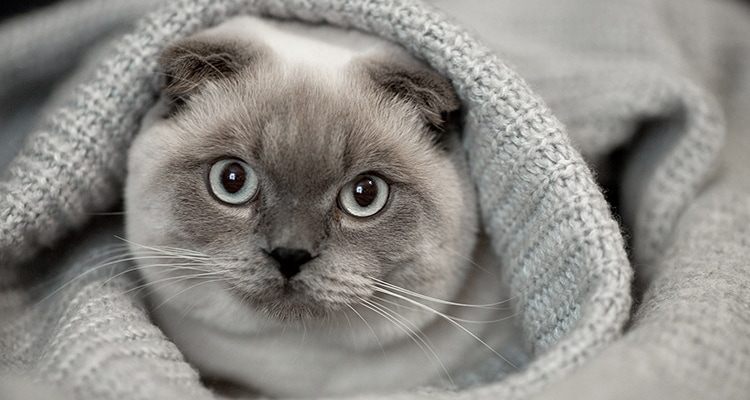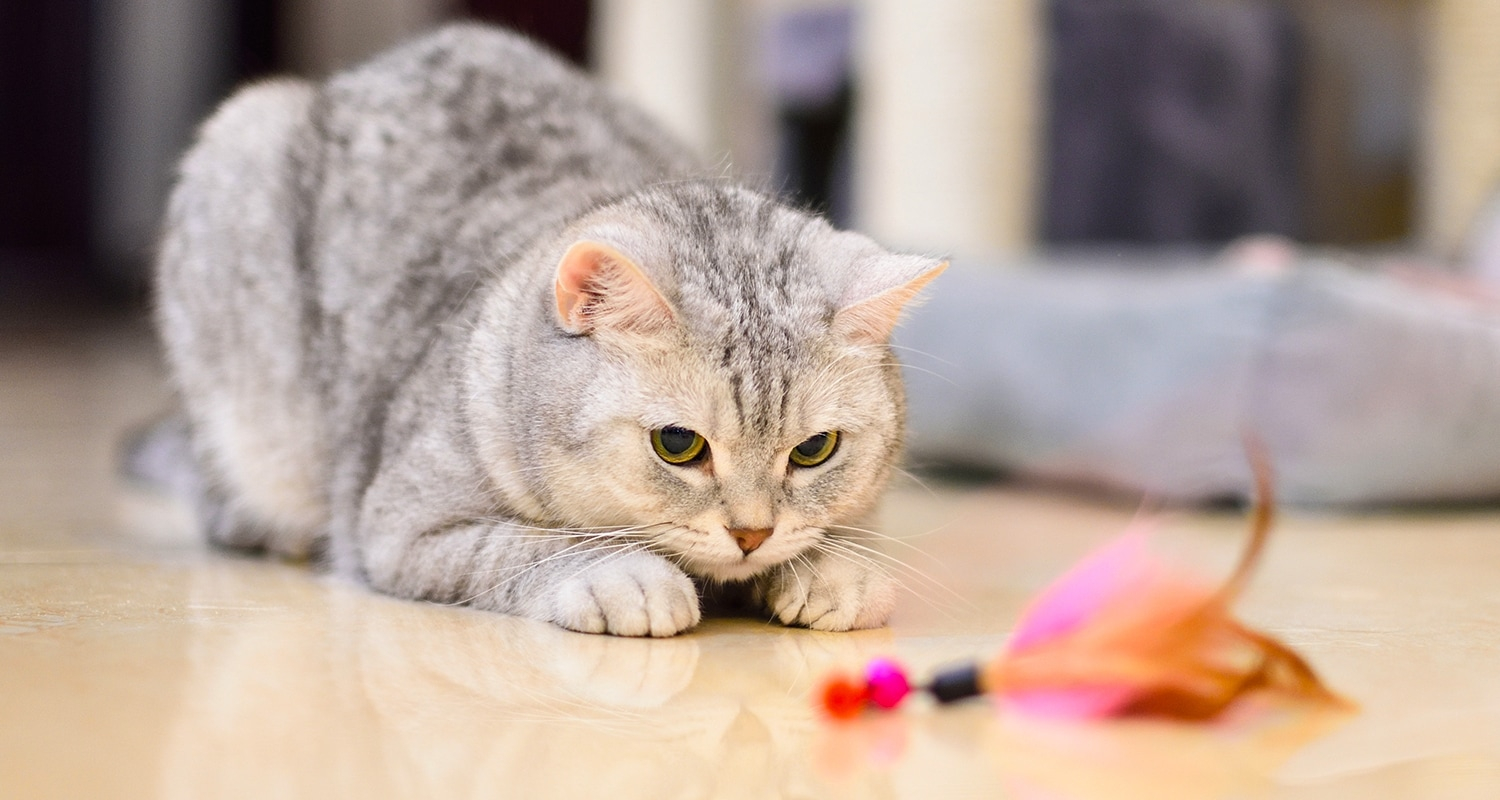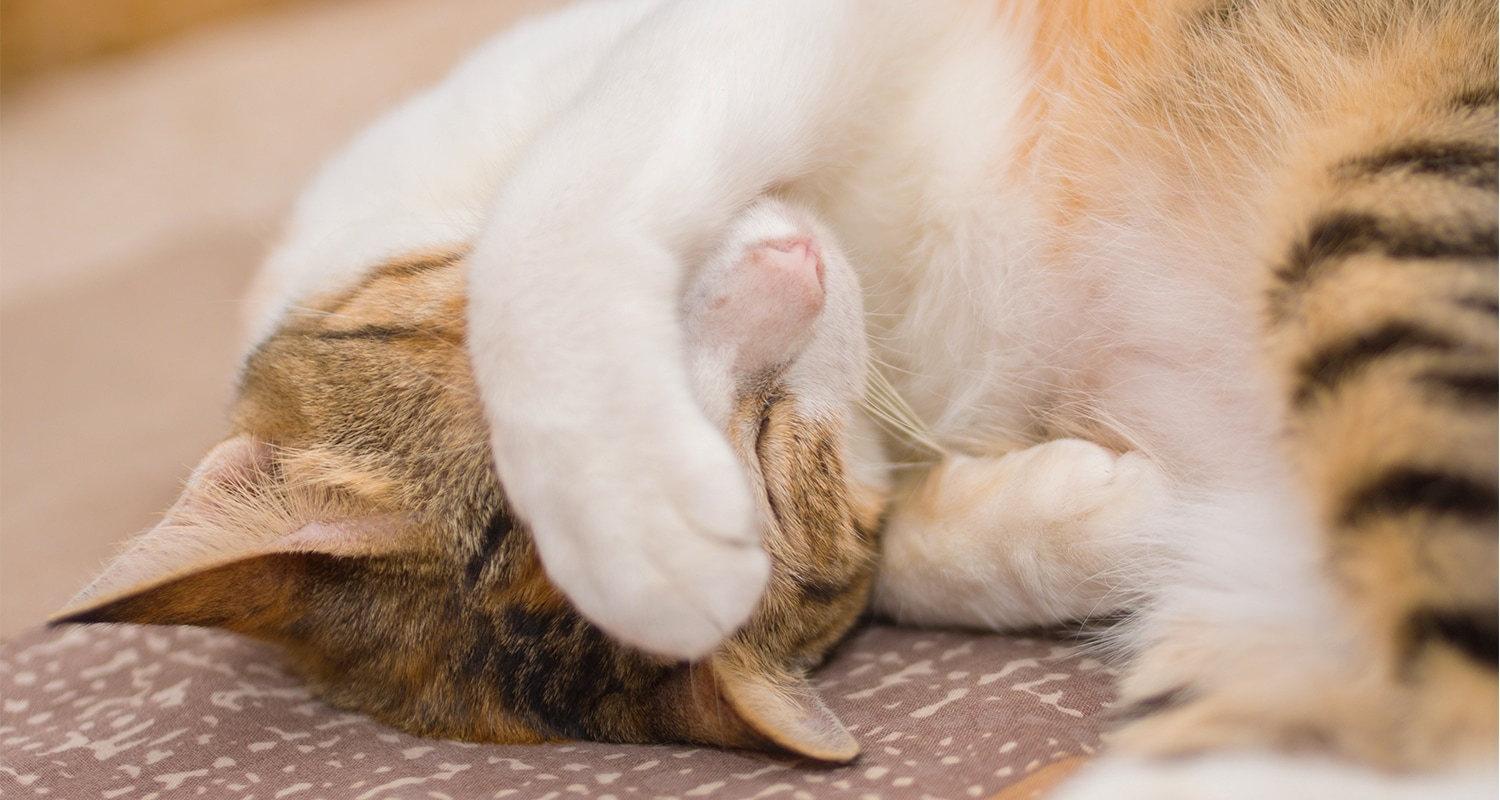
Breathing Problems In Cats (Dyspnea)
Get more information about the possible causes and treatments of feline breathing problems.
Download the Full Guide to Cat Asthma
Cats can experience trouble breathing (known as dyspnea) for a variety of reasons, from a foreign object getting stuck in the windpipe to respiratory infections or allergies. Depending on what is causing the issue and how severe it is, breathing problems can be a life-threatening situation.
Keep reading to learn what causes breathing problems in cats, signs and symptoms to watch for, and what you should do if your cat is having trouble breathing.
What Is Dyspnea?
Dyspnea is the general term for breathing difficulties and the sensation of shortness of breath. It describes a clinical sign that manifests as a result of a problem. A cat experiencing dyspnea would be said to be in respiratory distress.1
What Causes Dyspnea In Cats?
Most often, cats experience dyspnea due to problems within the lungs or airways, but there are other non-respiratory factors that can cause breathing troubles. These issues can be spontaneous, congenital (the cat is born with the issue), or gradually develop over time.

Some conditions that can cause your cat to experience breathing problems include:
- Feline asthma or chronic bronchitis
- Upper respiratory infections
- Airway obstruction
- Pneumothorax (collapsed lung)
- Pulmonary edema (excess fluid in the lungs)
- Infection
- Allergies
- Anemia
- Foreign objects
- Anatomical deformity/masses
- Obesity
- Heart failure2
Symptoms Of Dyspnea In Cats
Symptoms of dyspnea in cats include:
- Tachypnea (An increased respiratory rate of more than 40 breaths per minute)
- Head and neck extended in front of the body while breathing
- Coughing
- Open mouth breathing/panting (cats prefer to breathe through their nostrils unless under stress)
- Noisy breathing (stridor)
- Belly and chest moving significantly while breathing
- Hiding
- Blue-tinged gums
- Foam or froth coming out of the mouth3
Dyspnea Vs Tachypnea
Tachypnea is rapid breathing—the body’s way of trying to get more oxygen to the lungs. It can be a sign of dyspnea, but tachypnea isn’t always a sign of a breathing difficulty.
Rapid breathing occurs naturally during playtime and activity as the body uses more oxygen. However, tachypnea during rest or minimal activity may cause dyspnea and can be a sign of:
- Low oxygen levels
- Low red blood cell count
- Fluid in the lungs or chest cavity
- Tumors
- Asthma4
When Should I Be Concerned About Tachypnea?
After a good play session, your cat may be breathing rapidly from exertion—but it does not mean they are having difficulty breathing. You should be concerned if your cat is showing any symptoms of tachypnea at rest, including:
- A faster than normal rate of breathing
- Closed mouth
- The belly and chest moving rapidly while breathing

Dyspnea Vs Panting
Panting is similar to tachypnea. However, panting is not usually associated with respiratory conditions and involves shallow breaths through the mouth. Panting can be a sign of:
- Pain
- Side effects of medications
- High body temperature5
Symptoms of panting include:
- Fast, shallow breaths
- Open mouth
If you suspect your cat is having difficulty breathing, take them to the vet for an examination.
Diagnosis
Finding the cause of the breathing difficulty is important for determining the course of treatment needed to help your cat breathe easier. Your cat’s veterinarian will perform a thorough physical examination and evaluate your cat’s medical history to find the root of the problem.
Your vet will likely order standard tests such as a blood draw, urine analysis, and/or x-rays to rule out other conditions and help give a definitive diagnosis.6
Assessment
A lot can be determined from listening and watching your cat breathe prior to physical examinations or tests.7
1. Auditory
The type of sound that your cat makes when they breathe may help localize the source of breathing difficulty. Your vet will listen to determine if their breathing is noisy or quiet and if it happens when your cat breathes in (inspiration), out (expiration), or both.
Stertor is caused by partial obstruction of the upper airway somewhere between the nasal passages and back of the throat. It may sound like nasal congestion or snoring.
Stridor is a harsh, higher-pitched wheezing noise that may be caused by blockage in the larynx or windpipe and is usually heard on inspiration.
Wheezing is a continuous high-pitched whistling sound produced on expiration caused by narrowing or obstruction in the lower airways.
2. Visual
Watching how your cat breathes can be another clue your vet will use to understand the cause of dyspnea. Difficulty breathing on inspiration is often a sign of an upper airway condition while expiratory distress is often indicative of lower airway disease. Cats with expiratory difficulty may show an abdominal push that is reflective of their effort to exhale.
Paradoxical breathing, when the chest contracts during inhalation and expands during exhalation (opposite of the normal movement), is another sign that may suggest other diseases.

Treating Breathing Troubles In Cats
Treatment for cats with breathing problems will depend on the underlying cause. Antibiotics, bronchodilators, corticosteroids, and/or other medications may be prescribed to help your cat manage their condition and help them breathe better.
If your cat’s breathing problem is severe, the vet may give your cat oxygen therapy. If an asthma attack or an allergic reaction is suspected, your vet may administer drugs intravenously to control inflammation and swelling in the airways. Your cat will be closely monitored before being cleared to go home.
A cat with breathing problems can live a happy life provided they receive the necessary treatment and care for their condition. If you suspect your cat is having difficulty breathing, take them to the vet right away so they can be treated appropriately.
Take the Feline Asthma Assessment to see if your cat could have asthma.
1 “Dyspnea (Difficulty Breathing).” Cornell University College of Veterinary Medicine. https://www.vet.cornell.edu/departments-centers-and-institutes/cornell-….
2 “Breathing Difficulties in Cats.” PetMD. https://www.petmd.com/cat/conditions/respiratory/c_ct_dyspnea_tachypnea….
3 Justine A. Lee, DVM, DACVECC. “Breathing Problems in Dogs and Cats: Dyspnea.” Pet Health Network. http://www.pethealthnetwork.com/dog-health/dog-diseases-conditions-a-z/….
